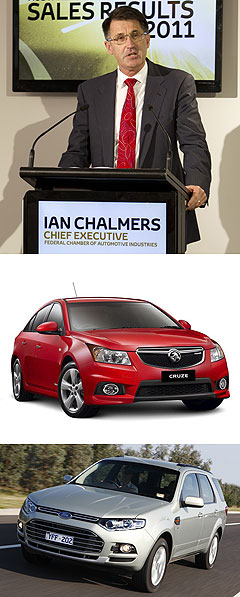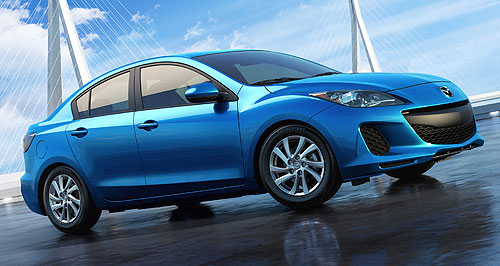Make / Model Search
News - General News - EmissionsVehicle CO2 emissions drop 2.8 per centCarbon ceiling: Popular cars like the Mazda3 SkyActiv are setting the trend as Australian buyers make the move toward greener new vehicle purchases. Latest good news on carbon emissions might pave the way for stiffer car standards6 Feb 2012 THE snowballing rate at which Australian motorists are adopting fuel-efficient new cars is likely to encourage the federal government to lift the bar on proposed mandatory vehicle CO2 emissions standards that are now on the drawing board in Canberra. Last year, the average amount of CO2 emitted by all new cars and light commercial vehicles sold in Australia fell 6.0 grams per kilometre or 2.8 per cent, from 212.6g/km in 2010 to 206.6g/km in 2011, according to figures released today by the Federal Chamber of Automotive Industries. This was the second-largest annual fall in vehicle CO2 emissions since the National Average Carbon Emissions figures were first compiled in 2002, eclipsed only by a 4.3 per cent in 2006. FCAI chief executive Ian Chalmers said the latest figures demonstrated the industry’s commitment to improving fuel efficiency and reducing CO2 emissions. “The result is a combination of improvements in vehicle technology and a change in consumer buying preferences toward lower emission vehicles,” he said.  Left: FCAI chief executive Ian Chalmers. Below: Holden Cruze 1.4 and Ford Territory diesel. Left: FCAI chief executive Ian Chalmers. Below: Holden Cruze 1.4 and Ford Territory diesel.Two of the most significant factors are a swing to smaller cars and the greater popularity of diesel engines in all cars, SUVs and light trucks. The latest fall puts the motor industry on track to easily surpass the federal government’s non-binding pre-election proposal to set the standard at 190g/km in 2015, and then 155g/km by 2024. The government is working on the draft regulations after receiving 37 submissions from interested parties – including the FCAI – in response to a discussion paper issued by the government last year. Although transport minister Anthony Albanese has given no indication of when the regulations will be ready to go public, many in the industry believe it will be in the next few months. The FCAI’s stance has been against mandatory CO2 emissions standards, saying the motor industry is already achieving significant annual reductions in CO2 output from its new-vehicle fleet. However, the Chamber has kept its options open, with Mr Chalmers saying yesterday that the industry looked forward to working constructively with the government on developing the new standard. Since 2002, the average CO2 output has fallen from 252.4g/km to 206.6g/km – an improvement of more than 18 per cent. If last year’s improvement can be maintained, the 190g/km figure mentioned ahead of the last election by prime minister Julia Gillard as the initial benchmark could be achieved by 2014 – a year ahead of the original proposed deadline of 2015. In their submissions to the government, several organisations have pressed the federal government to tighten the regulations further, to force the motor industry to increase the pace. The Australasian Fleet Management Association – representing fleet managers who look after more than 800,000 vehicles across Australia and New Zealand – called on the government to fall into line with more stringent European CO2 standards that will require all passenger cars to average 130g/km by 2015. In Australia last year, passenger car CO2 emissions averaged 183.9g/km, down 4.5 per cent on the previous year. The biggest gains were made by medium and large cars – 6.1 and 4.2 per cent respectively – while the increasingly popular SUVs improved 3.2 per cent. The only passenger car segment to fail to make a gain was upper large cars, which has tiny volumes. Light commercial vehicles contributed a 2.0 per cent gain.  Read more |
Click to shareGeneral News articlesResearch General News Motor industry news |











Facebook Twitter Instagram